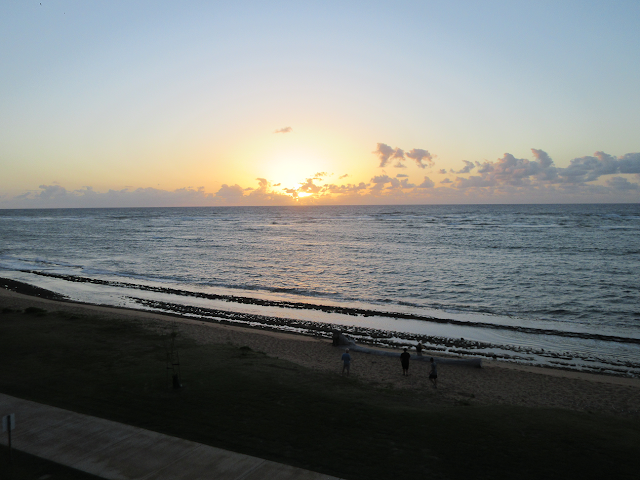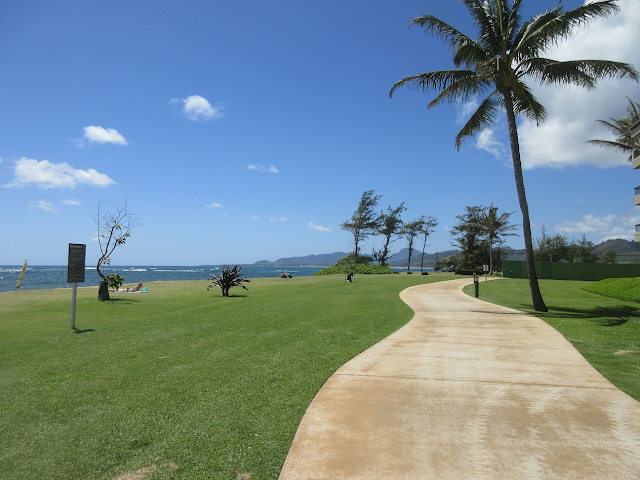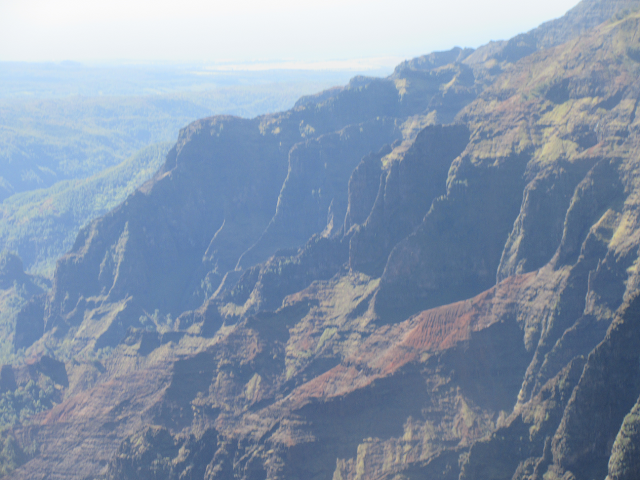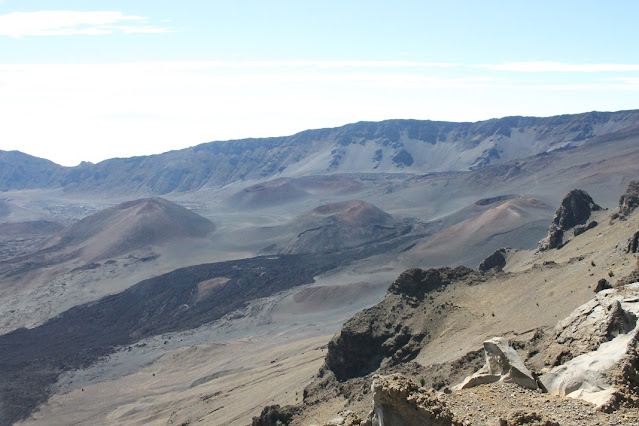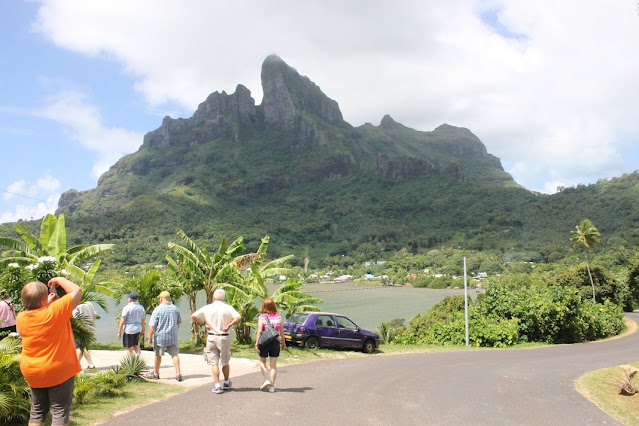The contrast is so huge, it's almost laughable. I've moved from a hotel a whole four stories tall into a forest of high-rises.
Nor is that the only contrast. To get here from Kaua'i, I had to take a short inter-island shuttle flight on Hawaiian Airlines. And here's a picture of the bus.
Readers of the previous blog post may recognize the setting, as this is an airline publicity photo taken over the Na Pali Coast in Kaua'i. Old-timers among my Canadian readers may recognize this Boeing 717 as the lineal descendant of the old McDonnell-Douglas DC-9 which used to fly with Air Canada to so many cities of all sizes across Canada. It's far too small and too short-ranged to operate flights from Hawai'i to anywhere else, so it spends its whole working life shuttling between the islands on a busy schedule of commuter flights -- like this one.
To those who may ask, "Why not ferries?", the answer is that the distances are considerable and the open-ocean waters around the islands of Hawai'i are often not as placid as the name "Pacific Ocean" would suggest. A ferry would have to be designed for full open-ocean operations, and would likely require five or more hours to make the voyage from Kaua'i to Honolulu. It's hardly surprising that the people of Hawai'i have embraced the air age when it comes to travelling between their islands.
Anyway, welcome to the island of O'ahu, home of the mid-Pacific crossroads metropolis of Honolulu and the world-renowned Waikiki Beach.
Although Waikiki may look, in pictures, much like many other famous resort areas around the world, it is actually a resort with a difference -- and in North America, only Fort Lauderdale (in my experience) is at all comparable. It's an urban resort, a resort area integrated right into a major city. You are driving down the streets of Honolulu, you cross a short bridge over the Ala Wai Canal, which you might not even notice, and there you are in the resort district of Waikiki.
By the way, notice anything about these place names? Honolulu? Waikiki? Duplicate syllables like this have a specific purpose in Polynesian languages like Hawaiian.
I'll go out on a limb and assume that Honolulu is an extremely calm port while Waikiki almost certainly means loads and loads of fresh water.
Waikiki resembles Florida beaches in another way. As the English translation of the name suggests, the area used to be a wetland fed by fresh-water springs and fronted by a natural dune separating it from the ocean. Modern development led to the construction of the Ala Wai Canal to drain the wetlands, and the importation of huge amounts of sand to build up the dune into a solid mass of land with a beautiful sandy beach at the front. Virtually all modern beach resorts in Florida were created in much the same way. This aerial shot shows clearly how the beach district is separated from the rest of the city by the Ala Wai Canal.
<a href="https://www.vecteezy.com/free-photos">Free Stock photos by Vecteezy</a>
Alas, nature is determined to reclaim her own, and the beach keeps eroding and washing away with the shoreline currents despite the best efforts to preserve it -- also a problem at many Florida resorts.
Only at the west end of the iconic crescent of sand, Duke Kahanamoku Beach, has the sand managed to hang on and widen. And that just happens to be where I am staying. Here's the view from my room.
Anyone who has ever stayed there will recognize this right away as a room view from the iconic Rainbow Tower of the Hilton Hawaiian Village Resort. Beyond a doubt, this building, with its spectacular mosaic rainbow mural on each end, is the most prominent and the most instantly recognizable high-rise on Waikiki.
It's also the most expensive part of the resort in which to stay. How did I afford it? Well, I didn't. My regular readers will recall that I have often talked about the benefits of loyalty. Here's another one. I had reserved the cheapest available room, a king-bed room with a resort view. That would have been in one of the back towers of the complex. On check-in, my Hilton Honors status entitled me to an upgrade to the best available room that's not a suite, and here I am. Here's an aerial view of the entire complex to give you an overview. The Rainbow Tower is the tall one casting its shadow over the lagoon.
In all, there are eight towers in the complex. The four marked "V" are the ones housing hotel rooms, while the four marked "G" are now branded as Hilton Grand Vacations, meaning that you pay even more for the use of suites, condominiums, or timeshares of one sort or another. Rooms in those buildings can also be booked as hotel rooms, but the rates are much higher than the hotel proper.
Within the complex, there are half a dozen assorted eating outlets belonging to the hotel, including a super-deluxe steak/seafood restaurant, a more casual beachfront restaurant, poolside cafe-bars and more. In the resort's marketplace, there are other independently operated restaurants, so that in total you have over a dozen choices of places to eat without leaving the property at all.
There are also two large swimming pools and three smaller ones, an enormous artificial lagoon for water sports of all kinds, and that beautiful broad beach out front. I'm sure many people who come here on holidays never leave the complex at all!
This might seem an unusual place for a guy who claims to hate crowds, but the odd thing is that, in spite of its sheer size, the Hawaiian Village is much less crowded than many other areas and resorts where I have stayed at one time or another -- and that includes the Sheraton in Kauai which I just visited for four nights.
In the next blog post, a quick tour of some of the major features of this city-within-a-city resort.

.png)








